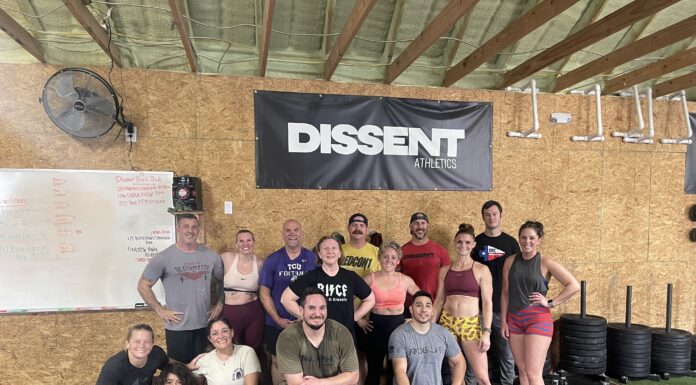by?NANCY SHUTE
?? ? ?Figuring out whether a child who might have a concussion should stay in the game just got easier, thanks to this one-word answer from the nation’s neurologists: No.? ? ?Today the American Academy of Neurology chucked 15-year-old rules that confused pretty much everybody, from parents and coaches to kids and doctors.?Instead of talking about various symptoms and concussion grades, the neurologists now say that the best offense is defense.??? ? ?Coaches should “immediately remove from play any athlete suspected of having sustained a concussion, in order to minimize the risk of further injury,” the new guidelines state. The advice applies to athletes of all ages, but kids merit special attention. {{more}}?? ? An athlete shouldn’t return to play until he or she has been evaluated by someone trained to look for subtle ongoing symptoms like headache, the new guidelines state. A history of concussions and younger age make a longer recovery more likely.?And if headaches and other symptoms come back, stop playing sports and see the doctor, the neurologists recommend.?? ? ?The strong call to remove athletes from play is fueled partly by studies that found that people are more vulnerable to a second concussion within 10 days of the first injury. Multiple concussions can make symptoms worse and slow recovery.?? ? ?Though these new standards are clearer, parents and student athletes may still find the signs and symptoms of concussion confusing.?Concussion is complex because the brain is complex, says Jeffrey Kutcher, a neurologist at the University of Michigan and a co-author of the new guidelines, which were published today in Neurology.??? ? ?”Stay away from simple rules like ‘three concussions and you’re out’ or ‘stay out for a week,'” Kutcher told Shots.??? ? ?Each brain will respond differently to an injury, Kutcher says. Thus the need to step back and assess each kid. At the same time, he says, the neurologists realize that “removing anybody from athletics has significant negative effect across the lifespan.”?So expect a lot of debate at all levels of sport on when it’s really safe to come back.?? ? ?The new guidelines, which have been in the works for years, come as worries about the potential for permanent brain damage from sports concussion has soared. Those concerns first started with pro football and hockey, but have seeped down to student sports at all ages.?? ? ?Risk of concussion is greatest in football and rugby, the neurologists report, followed by hockey and soccer. For young women and girls, soccer and basketball pose the greatest risk. Teenagers may fare worse after a concussion, some studies say, perhaps because their brains are rapidly making new neuronal connections.?? ? ?A postmortem analysis of the brain of NFL linebacker Junior Seau, who committed suicide last year at age 43, found that he had suffered chronic traumatic encephalopathy, a neurodegenerative disease associated with repetitive head injuries.?? ? ?Risk factors for that sort of chronic impairment are prior concussion, longer exposure to the sport and the ApoE4 gene variant, the new report says. That variant exists in about 14 percent of the population, and has been linked to heart disease and some cases of Alzheimer’s disease.?? ? This article has been reprinted from National Public Radio. ?For more on this story:
Recent News Feed
SCHOOL NEWS
Local Weather
Kennedale
clear sky
78.9
°
F
80.2
°
76.9
°
81 %
3.5mph
0 %
Fri
97
°
Sat
96
°
Sun
98
°
Mon
95
°
Tue
85
°
Fellowhship Academy
Sports
2025 State 4A D2 Champions Kennedale Wildcats
State finals in pictures via University Interscholastic League
Kennedale Life
Columnist Corner
Deanna's Art
Why Community Matters
What is community? By definition, it is a group of people coming together over shared values and ideas. Lately, in our society that seems to be harder and harder to find. In an effort to be our true selves and explore our own beliefs,...
Counselor Susan's Couch
Suicide Prevention Week in the K.I.S.D. Intended to Raise Awareness, Spark Conversation
The week of September 6th through September 9th is being recognized and promoted as Suicide Prevention Week throughout the K.I.S.D. and students were encouraged to wear varying outfits and apparel items to align with themed days, all designed to raise awareness, prompt conversation, and...
COVID-19 vs. the Big 4 (what will actually kill you) Part 1
COVID-19 vs. the Big 4 (what will actually kill you) Part 1
By Guest Writer:
Jonathan Royston
We opened our gym, Dissent Athletics, on February 7th of 2020. About six weeks later, our gym, Kennedale, and the entire Nation shut down due to the COVID-19 virus. We...
The New Year and Resolutions
Welcome to the new year 2022!
I pray and hope this new year goes well for everyone. May the Lord crown this year with His goodness for us, and may our carts overflow with abundance of blessings (Psalm 65:11).
As another year begins , we have...
Five Ways to Cope with COVID Confinement
About 7 weeks ago our world changed. Life as we know it stopped. Schools closed. Restaurants closed. Bars closed. Gyms closed. The term “social distancing” became in vogue. Walking into a retail establishment with a mask on went from suspicious to requested. Diagnoses, prognoses,...
Movie Critic
The Best (in Film) for 2020… and the Worst
While I wish that I could say the past year will be best-remembered for all of the wonderful movies I had the pleasure of seeing, the truth is simply this: most were either average or barely above average, in my opinion, and one was...
Rhonda's Local Real Estate
Show Me the Real Estate Blog
So.....Real Estate.
Well. The new year has finally come upon us, and so far it doesn’t seem any less weird than 2020. So what does that mean for your most expensive investment? What does it mean if you're looking to buy your most expensive investment?...
Market priced senior housing designed around “pocket neighborhoods” coming to Kennedale
At the last Kennedale City Council held on September 17, the Council approved a new housing development for 439 Mansfield Cardinal between the Brookstone Estates and the Oakcrest Apartments and down from the Burger Box.
Full agenda available @ https://kennedaletx.civicclerk.com/Web/Player.aspx?id=2180&key=-1&mod=-1&mk=-1&nov=0
The "Cardinal Addition" will be designed...
Keeping Kennedale up to date in Real Estate
Real Estate is always such an interesting source of conversation, because it is of interest to just about everyone, whether you are buying, selling or investing. Our market here in Kennedale is a strong one, and as residents, you can be proud to call Kennedale home in a town that strives hard to make this a great place to live. In a new Gallup survey, only 21% of Americans think stocks or mutual funds are the best long-term investments; Real Estate came in as the most favored long-term investment, a position it has held since 2013.
LATEST NEWS
All
- All
- Archive
- Art
- Business
- City Government
- Councilman Chris Pugh's Corner
- Dating
- District Annoucements
- Event Calendar
- Fellowship Academy
- History
- Kenendale Jr High Student Publication
- kids
- KISD
- KISD School Board Annoucement
- KISD Sports
- Life
- Local
- Local Business
- Local Elections
- Local News
- Local Schools
- Mayor's Notes
- Medical
- Mental Health
- Movies & Books
- National
- Obituaries
- Opinion
- Pets
- Police Blotter
- Press Release
- Real Estate
- religious
- Revival Worship Center
- Sports
- Superintendent Corner
- Taylor's Corner
- Technology
- Theatre





































